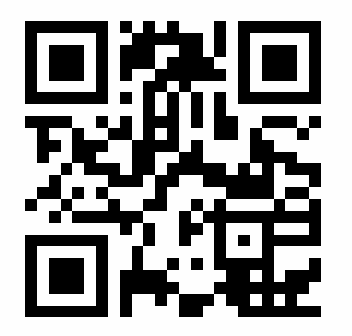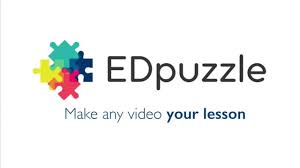Apr
2018
Digital Literacy for St. Cloud State University
Where | Къде: СУ „Димитър Матевски“ https://goo.gl/maps/rojNjE3dk4s and online ( виртуално)
When | Кога: 2. май, 2018, 14 часа | May 2, 2018, 2PM local time (Bulgaria)
Who | Кой: преподаватели и педагози | teachers and faculty
How | Как: използвайте “обратна връзка” за споделяне на вашите идеи | use the following hashtag for backchanneling #BGtechEd
short link: http://bit.ly/teachassess |

Live stream: |
Тема1. Сравняване на Kahoot, Edpuzzle и Apester – 1-1, 1/2 час продължителност
Topic 1: A comparison of Kahoot, Apester and EdPuzzle
definitions | термини : BYOD (BYOx), flipped classroom, formative assessment (vs summative assessment)
| Kahoot (https://kahoot.it/) – 10 мин. | |
 |
|
| Apester (https://apester.com/ )– 10-15мин. | |
| |
|
| Edpuzzle (https://edpuzzle.com )– 10 – 15мин. | |
 |
https://edpuzzle.com/assignments/5ad4cad48f4df34107c58bd0/watch |
Тема 2. Виртуална реалност в учебния процес – теория и практика- 1-1, 1/2 час продължителност
Topic 2. Virtual reality in teaching and learning – theory and hands-on
When a student is brilliant on the street corner but falling asleep in class, something is wrong with the schooling system
Ако учащ се е страхотен на ъгъла на улицата, но се проваля или заспива в клас, тогава нещо е грешно с учебната система
https://blog.stcloudstate.edu/ims/2018/04/17/education-teched-frenemies/
VR can be inexpensive and effective | Виртуална / разширена реалност може да бъде ефикасна и ефективна: https://blog.stcloudstate.edu/ims/2018/04/26/teaching-virtual-reality/
https://www.linkedin.com/groups/2811/2811-6391674579739303939
Definitions for VR/AR/MR | дефиниции на: виртуална реалност; разширена реалност; смесена реалност
https://blog.stcloudstate.edu/ims/2018/03/21/t4tl-games-and-vr-library/
#3 from the following blog entry: https://blog.stcloudstate.edu/ims/2018/04/17/practical-about-vr-and-ar-in-schools/ (go beyond storytelling)
++++++++++++++
Additional Information | Дпълнителна литература/информация
https://blog.stcloudstate.edu/ims/2016/02/22/formative-assessment-ideas/
Formative Assessment Tools: https://blog.stcloudstate.edu/ims/2016/01/13/formative-assessment-tools/
https://blog.stcloudstate.edu/ims/2014/12/09/formative-assessment/
by invitation of New Bulgarian University, Sofia, Bulgaria: https://www.nbu.bg/en
May 14, 9-11AM, New Bulgarian University.
short link: http://bit.ly/embed18
|

Live stream: backchanneling: @scsutechinstruct ##NBUembed Archived Discussion |
Video 360 excerpt from the discussion:
Семинар „Embedded“ библиотекари и геймификация в библиотеките:
Съвременни американски практики“, 14 май 2018 г., 9.00 ч.-11.00 ч.,
Preliminary Information and Literature. Please do not hesitate to share in the comments section your ideas, suggestions and questions
предварителна информация и литература по дискусията. Не се колебайте да споделите мнения, препоръки и въпроси в “Comment” секцията:
https://blog.stcloudstate.edu/ims/2017/10/03/embedded-librarianship-in-online-courses/
https://blog.stcloudstate.edu/ims/2017/08/24/embedded-librarian-qualifications/
https://blog.stcloudstate.edu/ims/2015/05/04/lms-and-embedded-librarianship/
“Embedded librarianship” also mentioned in:
https://blog.stcloudstate.edu/ims/2015/05/27/handbook-of-mobile-learning/
https://blog.stcloudstate.edu/ims/2016/08/18/digital-humanities-and-libraries/
Gaming and Gamification and Education:
https://blog.stcloudstate.edu/ims/2018/04/18/engage-with-dungeons-and-dragons/
https://blog.stcloudstate.edu/ims?s=iste+standards
++++++++++++++++
For more information and for backchanneling please use the following social media
за повече въпроси и информация, както и за споделяне на вашите идеи и мисли използвайте следните канали / социални медии:
Facebook:
Twitter:
https://twitter.com/SCSUtechinstruc/status/984437858244145152
LinkedIn discussion on VR/AR
https://www.linkedin.com/groups/2811/2811-6391674579739303939
++++++++++++
even more info
BUT WAIT
how does embedded librarian relates to the emerging technologies in the library?
Monday, May 07 | 1:00pm – 2:00pm ET | Online
The iGeneration—the part of Generation Z that is high school or college age—has been estimated at 42 million strong. Due to recent events and the influence of families and social networks, this segment is finding its voice and power much quicker than its predecessors, the Millennials.
 Jim Fong Chief Research Officer, University Professional and Continuing Education Association (UPCEA)
Jim Fong Chief Research Officer, University Professional and Continuing Education Association (UPCEA)
+++++++++++++
more on Gen Z in this IMS blog
https://blog.stcloudstate.edu/ims?s=gen+z
++++++++++++++
more on iGeneration
success: do the best to improve a situation
++++++++++
more on social media in education in this IMS blog
https://blog.stcloudstate.edu/ims?s=social+media+education
++++++++++++++
more on online practices in library in this iMS blog
https://blog.stcloudstate.edu/ims?s=online+library
++++++++++++
more on library technologies in this IMS blog
https://blog.stcloudstate.edu/ims?s=library+technologies
Before they set foot in their first class, incoming college students face a maze of requirements and resources that will be critical to their success. So-called “student supports” abound. Yet forty percent of first-year students don’t return the following year, and a growing number report information overload as they navigate campus life amid newfound independence.
The nine in 10 undergraduates who own smartphones are probably familiar with the xkcd about it. College-aged Americans check their devices more than 150 times per day. So it should be no surprise that a growing body of research suggests that mobile solutions can play a critical role in enhancing the student experience.
1. Is the mobile app native?
We’ve all had the frustrating experience of using a smartphone to navigate a page that was designed for a computer. But when designing native mobile apps, developers start with the small screen, which leads to simpler, cleaner platforms that get rid of the clutter of the desktop browsing experience.
As smartphones overtake laptops and desktops as the most popular way for young people to get online, native design is critical for universities to embrace.
2. Is there a simple content management system?
It’s also critical to explore whether mobile apps integrate with an institution’s existing LMS, CMS, and academic platforms. The most effective apps will allow you to draw upon and translate existing content and resources directly into the mobile experience.
My note: this is why it is worth experimenting with alternatives to LMS, such as Facebook Groups: they allow ready-to-use SIMPLE mobile interface.
3. Does it allow you to take targeted action?
At-risk or disengaged students often require more targeted communication and engagement which, if used effectively, can prevent them falling into those categories in the first place.
Unlike web-based tools, mobile apps should not only communicate information, but also generate insights and reports, highlighting key information into how students use the platform.
4. Does it offer communication and social networking opportunities?
Teenagers who grew up with chatbots and Snapchat expect instant communication to be part of any online interaction. Instead of making students toggle between the student affairs office and conversations with advisors, mobile platforms that offer in-app messaging can streamline the experience and keep users engaged.
5. Does it empower your staff?
++++++++
more on mobile in education in this IMS blog:
https://blog.stcloudstate.edu/ims?s=mobile+education